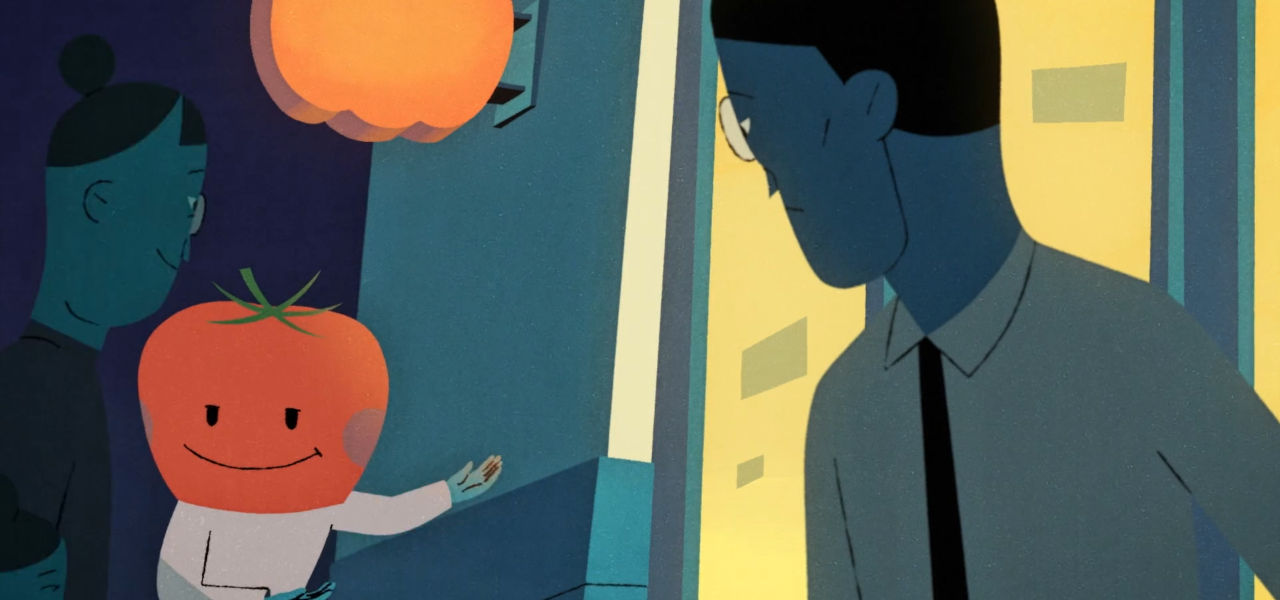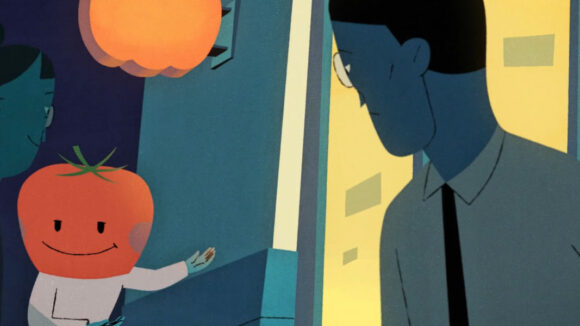

2024 Oscars Short Film Contenders: ‘Tomato Kitchen’ Director Junyi Xiao
Welcome to Cartoon Brew’s series of spotlights focusing on the animated shorts that have qualified for the 2024 Oscars. There are several ways a film can earn eligibility. With these profiles, we’ll be focusing on films that have done so by winning an Oscar-qualifying award at an Oscar-qualifying festival.
Today’s short is Tomato Kitchen from director Junyi Xiao. The film was produced by Studio Reflection as part of the Capsules anthology series at Chinese platform Bilibili. Tomato Kitchen earned Oscar qualification by winning the best international animation short film award at the International Animation Festival Chilemonos in Santiago, Chile.
Tomato Kitchen is an allegory about race and identity in which an accident interrupts a human protagonist’s dinner with his colleagues. The unexpected incident reveals dark truths of the Tomato Kitchen and the character’s hidden past.
Cartoon Brew: Your film touches on some profound societal themes that have been bubbling under the surface for years but which became widely recognized during the pandemic. What made this the right time to make Tomato Kitchen?

Junyi Xiao: I began working on the script a long time ago. Initially, the story revolved around watermelons. People were so obsessed with eating watermelons that their heads transformed into watermelons. In Chinese culture, those spectators who mindlessly follow online trends are often referred to as “吃瓜群众” (chī guā qún zhòng), which amusingly translates to “watermelon-eating masses” in English.
However, numerous societal events between 2020 and 2022 gradually shifted the creative direction of the script. Rather than pinpointing a specific moment or event that made me feel, “it is the time to make the story of Tomato Kitchen,” it’s more accurate to say that the social atmosphere in both China and the U.S. during the Covid period led me to believe that making a film addressing the shared challenges faced by marginalized groups was necessary.
What was it about this story or concept that connected with you and compelled you to direct the film?
I am Chinese and moved to the U.S. for school in 2014. Having lived in L.A. for nearly nine years, I still cannot say I have successfully assimilated into the mainstream. When I was in China, I, as a heterosexual male, was part of the societal majority. However, in the U.S., my Asian identity placed me in the realm of minorities. This shift in identity made me observe aspects I had previously overlooked and look at myself from a new perspective.
In the story of Tomato Kitchen, our protagonist is also a guy who has struggled to blend into the mainstream. I have put a lot of myself into this character. But at the same time, I also wanted to leave some space for the audience to decode the film. I wish the film could be a vessel to which every audience member can insert their experiences and understandings.
What did you learn through the experience of making this film, either production-wise, filmmaking-wise, creatively, or about the subject matter?
In the past, I was working as a one-man band on my earlier films. However, Tomato Kitchen is the result of a collaborative effort. There wre numerous challenges at first, especially during the pandemic. Since team members were scattered in different countries worldwide, I had to adapt to managing schedules and navigating time zone differences. It was a valuable learning experience for me working as a producer as well as a director. Over time, I understood that filmmaking is an art of communication. It’s not just about the film connecting with its audience; it’s also about ensuring seamless communication among all the departments behind the scenes.
Can you describe how you developed your visual approach to the film? Why did you settle on this style/technique?
Tomato Kitchen is a fictional story set in a fantasy world. From my perspective, there are two approaches to immersing the audience in the story’s universe. One is going extremely realistic on production design with very expansive cgi like Avatar, but honestly, that’s way beyond what I can do with my budget and resources. The other is using stylized design and aesthetics to embrace the unique attributes of animation. In this way, the audience can easily accept the story’s fictional nature. This approach fit our situation better, and that’s how we settled on the art style of the film. The character designs aren’t super realistic, but that doesn’t stop the audience from feeling for them. Similarly, even though the environment designs aren’t overly detailed, they can still capture the somber vibe in the story.
